This article by Jeff first appeared in GardenDrum in 2015, for the Australian Plants Society NSW.
I have been growing Australian orchids in my Sydney native garden for nearly 30 years. Every year, I get a stunning display that wows everyone who sees it.
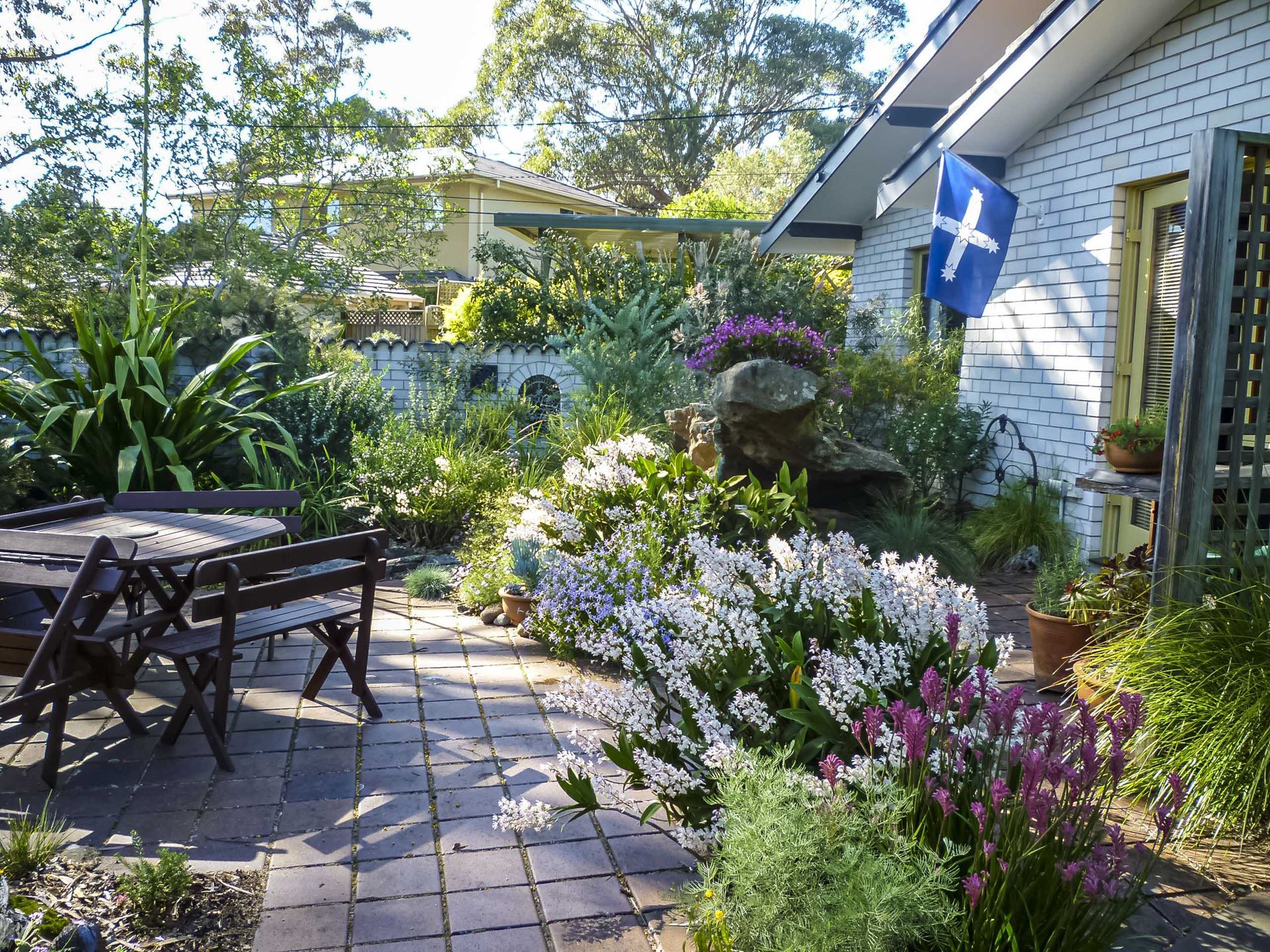
Our front courtyard filled with Australian plants, including many orchids
Orchids in history
I’m not the only one fascinated by orchids. Apparently, the world’s first book on orchids was published in China in 1228 and the second in 1247. Orchids were used to treat venereal diseases, diarrhoea, boils, neuralgia and sick elephants!
Orchids are still being used today for medicinal reasons. Not sure about the elephants though!
Charles Darrow, who claimed to have invented the game of Monopoly, retired with all his Monopoly money at the age of 46 and devoted himself to gathering and breeding wild orchids.
The name orchid derives from the Latin orchis which means testicle – referring to the testicle shaped tubers of the plants roots and the long-held idea that orchids sprang from the spilled semen of mating animals.
-Edit.jpg)
Close up of Thelychiton speciosus, growing under trees in the Hunter Valley. Photo Heather Miles
But enough of that! Onto more prosaic matters.
Hardy Australian Orchids
In Australia, we have over 800 species of orchids in 107 genera, all belonging to the Orchidaceae family.
My favourites are the Thelychiton, formerly called Dendrobium (at least this was their name at the time of writing!). These orchids are very hardy and can endure extreme drying out. In fact, many are killed by too much kindness and water.
They flower best in full sun to one quarter shade.
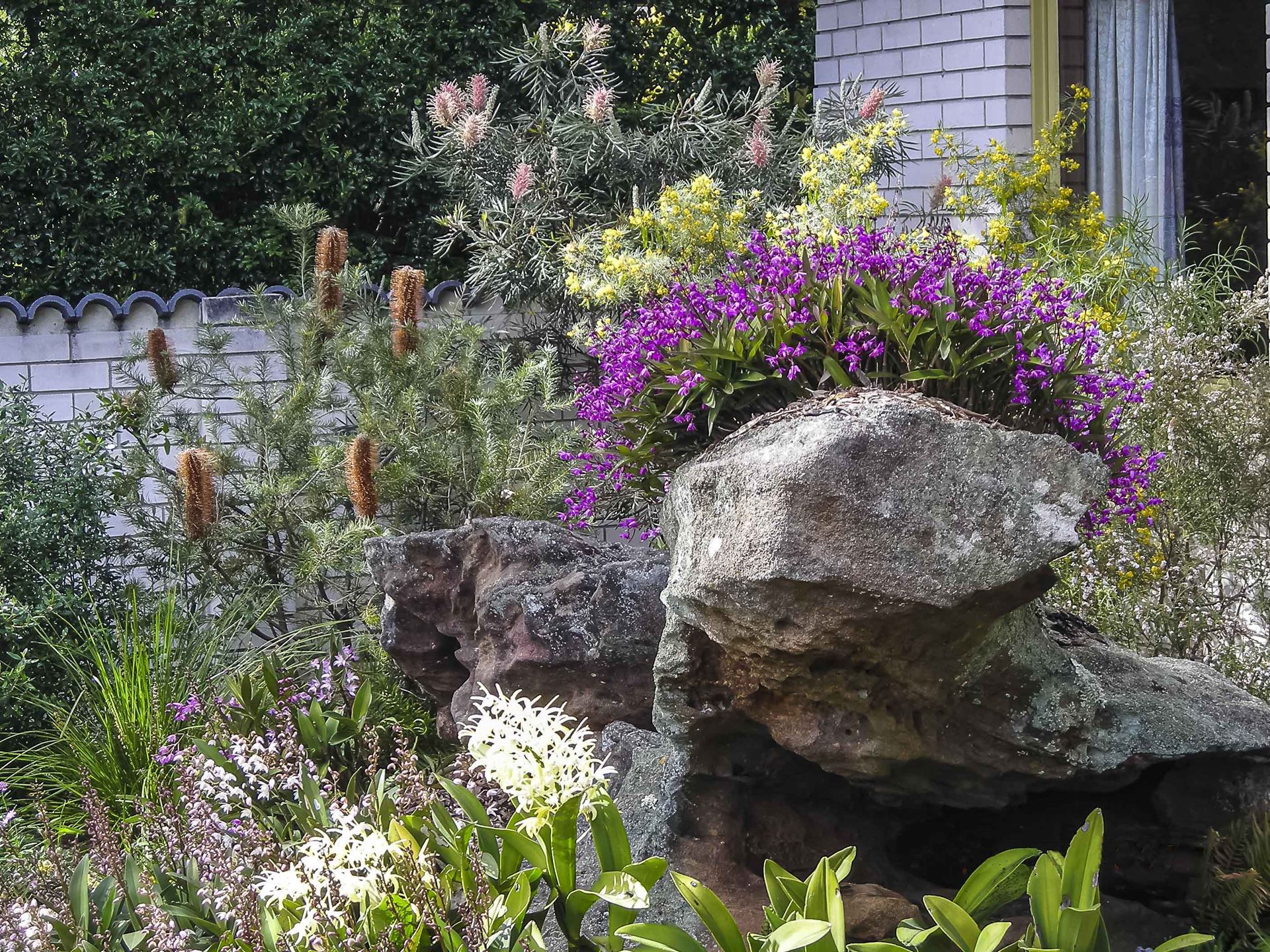
Native orchids thriving on rocks in Sydney backyard, with a backdrop of Grevillea ‘Misty Pink’, Banksia and Senna artemisioides, the yellow flowering shrub. Photo: Jeff Howes
How to grow Thelychiton
One of most frequent questions I receive is how do I manage to grow Thelychiton kingianus and Thelychiton speciosus orchids on my rocks and ‘apparently’ in the ground?
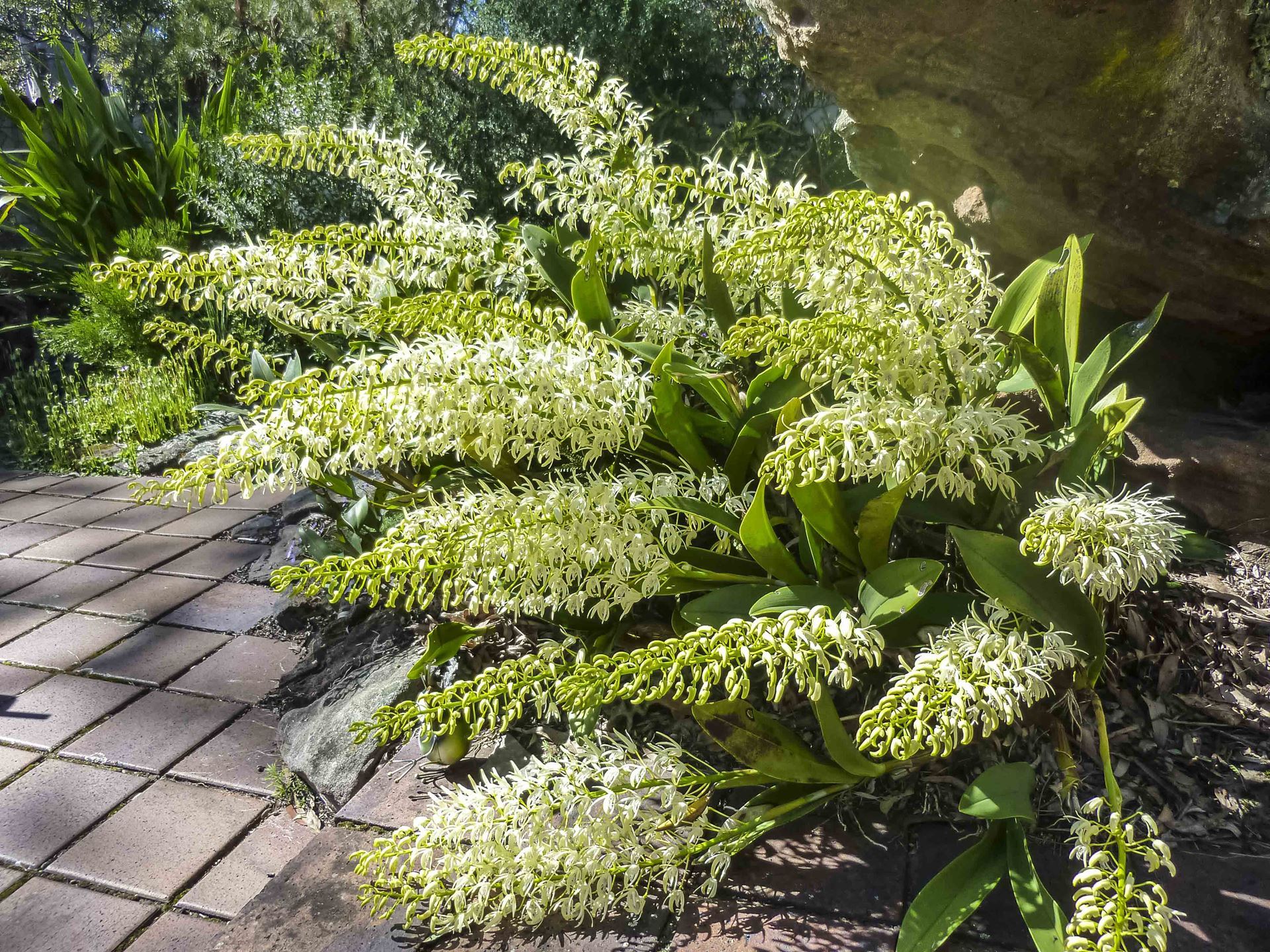
Thelychiton speciosus, formerly Dendrobium speciosum, growing happily in the courtyard of our Westleigh home. Photo: Jeff Howes
To establish them on large rocks, follow these simple steps:
- Obtain some shoots that have been removed from existing orchids or cut off from existing clumps. These are called aerial roots and ideally have three or four pseudo-bulbs.
- Hold them down with small rocks (or even tie them down with old stockings) and surround them with plenty of old leaf litter. Use an open, friable litter that does not hold too much moisture and drains well.
- Keep the orchids moist (not wet) until new growth commences and then only water occasionally and apply more mulch as they grow.
- You can apply liquid fertilizer monthly during spring and summer at half strength if you wish, but this is not really necessary, as they get enough nutrients from the decaying leaf litter.
To appear to get them growing in the ground (which they won’t), place a few 50 mm thick paving blocks on the ground and follow the above method. In no time at all, they will multiply and reward you with an abundance of flowers.
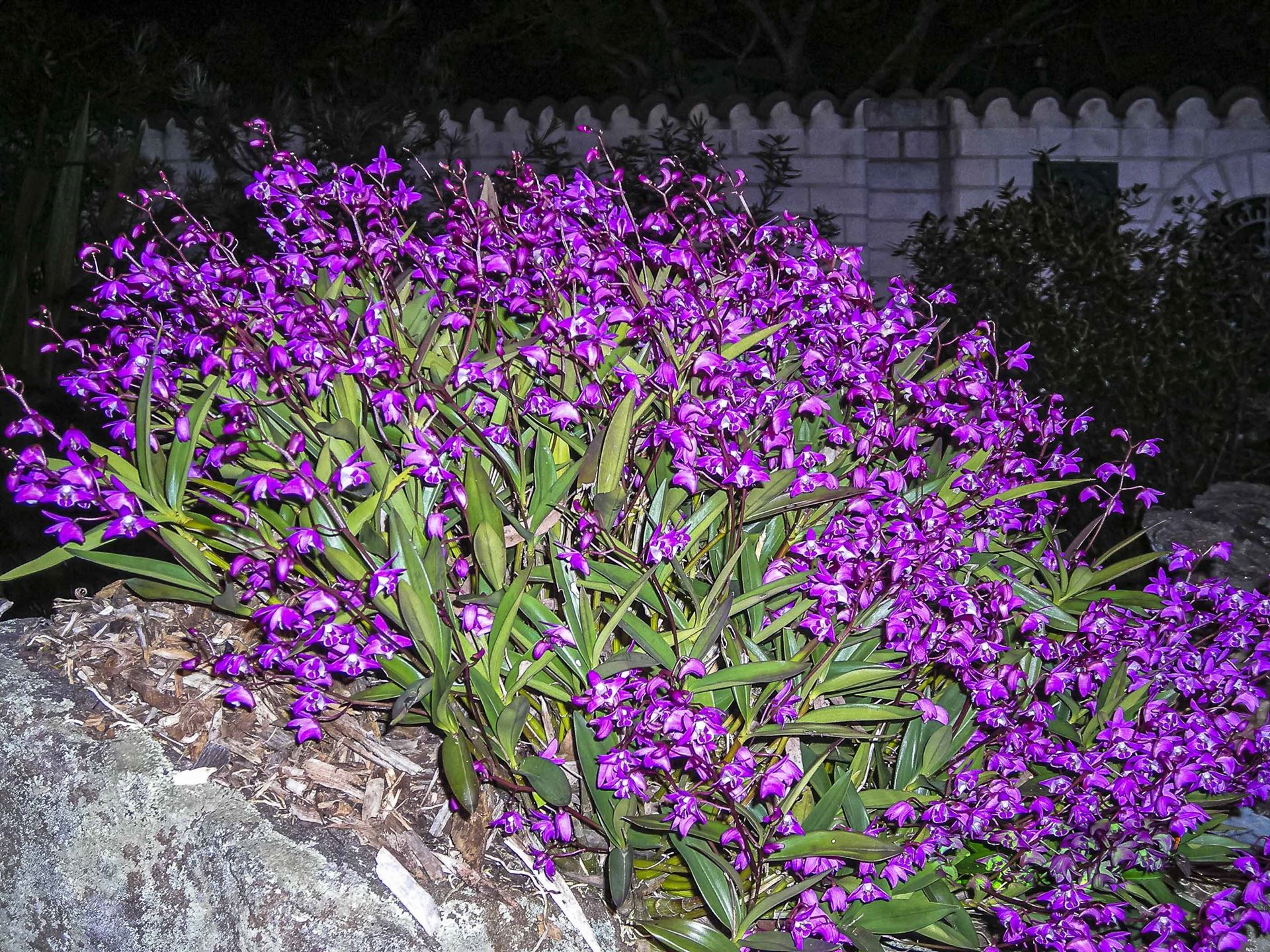
Thelychiton kingianus (formerly Dendrobium kingianum), is commonly known as the Pink Rock Orchid. It has masses of beautiful regally coloured flowers in late winter and early spring. Photo: Jeff Howes
Bugs in orchids
Do any bugs attack orchids? Unfortunately yes!
An import from Queensland, these orange and black beetles grow to about 10 mm long and can fly. In summer months, the adult beetle eats the new leaves of orchids. They then lay eggs in the soft, new stems and the larva, a soft white maggot-like grub hatches, then eats and destroys the stem and growing tip. At their worst, they will destroy all the new seasons’ growth on your orchids.

Dendrobium beetles (Stethopachys formosa), photo Jeff Howes
You can control by spraying an insecticide when you see them. The easier and more challenging way is to sneak up on them (there is always two of them), place your hand slowly below the leaves being eaten by the buggers and then, with your other hand, try to grab them. If you miss, they will hopefully drop into your other hand as their defence is to drop to the ground when disturbed. Now with a smile on your face, crush them.
Figuring out which plants work for you
Whenever people see my orchids, they ask: which ones do I grow, how do I grow them, how do to keep them healthy?
I start off by saying that Australia has over 20,000 unique plants, including the orchids. They grow from coast to desert, north to south, in many different conditions. So I suggest that people ask themselves a few simple questions, to better understand their microclimate. These include:
- How much sun is present?
- What type of soil is it?
- Is it well drained or does it retain water?
- Will my plants compete for nutrients with other plants?
There are some great resources to draw on to help you with the answers to these questions including specialist orchid nurseries, a great book called Native Orchids of Australia, by David Jones, published by Reed Books and our Australian Plant Society website has some great information: Starting out with Native Orchids by Brian Walters and Les Nesbitt’s, Australian Native Orchids.
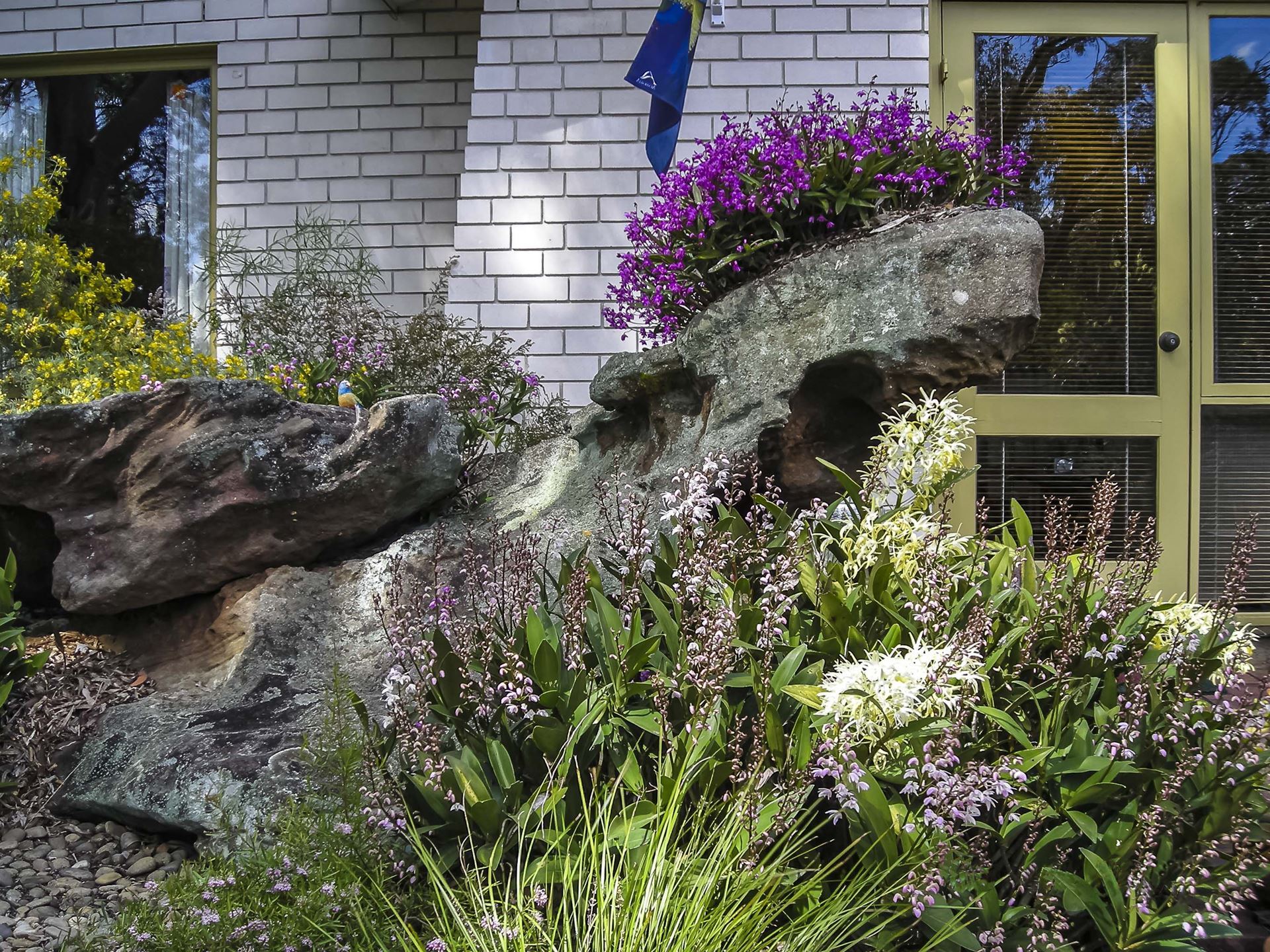
Thelychiton x delicatum is the pink orchid at the front of the photo. This orchid is a cross between Thelychiton kingianus and Thelychiton speciosus and has a stunning fragrance that you can smell as soon as you enter the courtyard. Photo: Jeff Howes
Addiction
Why not give these beautiful orchids a go in your garden? You’ll be amply rewarded for many years with exquisite, fragrant blooms.
Just a word of warning…
‘Beauty can be painfully tantalizing, but orchids are not simply beautiful. Many are strange-looking or bizarre, and all of them are ugly when they aren’t flowering. They are ancient, intricate living things that have adapted to every environment on earth. They have outlived dinosaurs; they might outlive human beings. They can be hybridized, mutated, crossbred, and cloned. They are at once architectural and fanciful and tough and dainty, a jewel of a flower on a haystack of a plant…To desire orchids is to have a desire that will never be, can never be, fully requited.’
Susan Orlean 2011, The Orchid Thief, A True Story of Beauty and Obsession, Random House
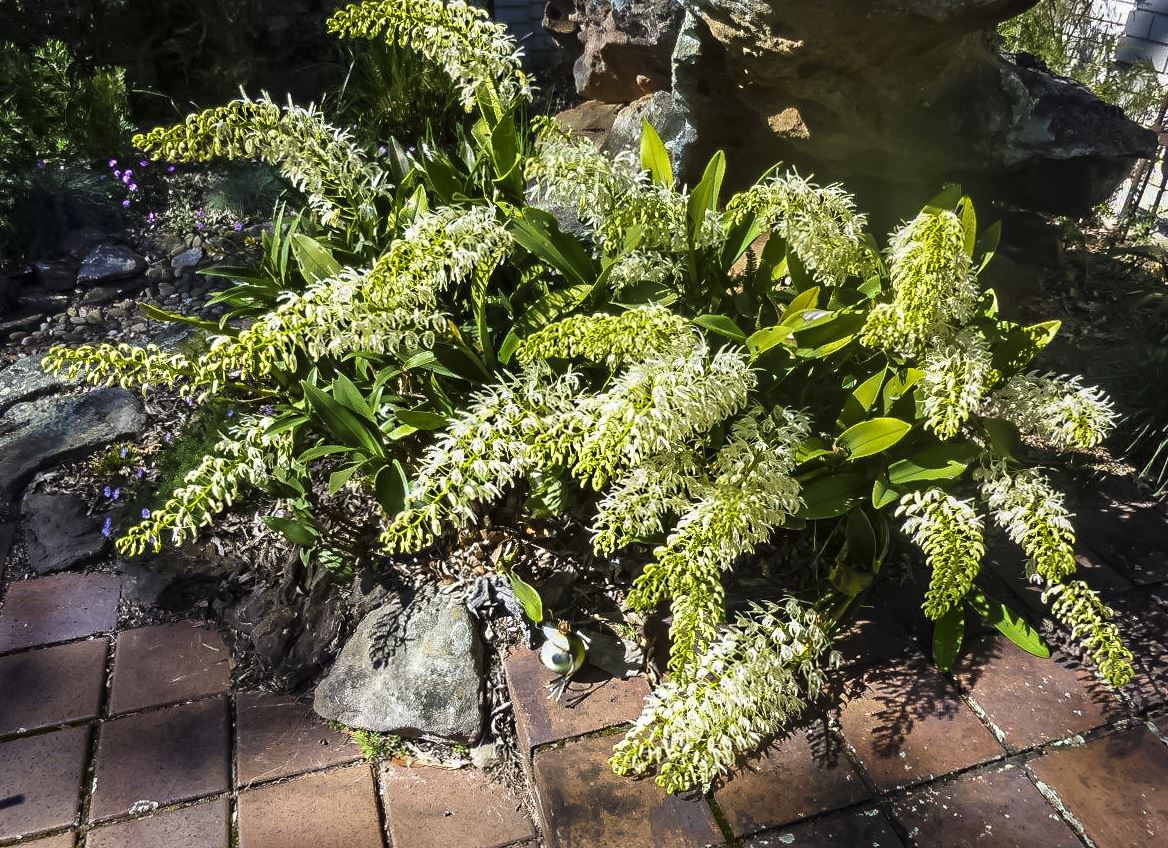
Thelychiton speciosus loving full sun and part shade. Photo: Jeff Howes
